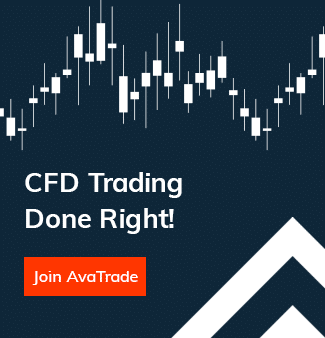
Corn Trading via CFDs with Friedberg Direct
It might shock some readers that even though corn enjoys huge global demand and popularity, trading corn futures is not so common. As such, it is not offered by all brokers, especially not with such good conditions.
- Leverage available on corn CFD trading
- Trade on an exclusive market 17.5 hours a day
- A unique and rarely traded commodity
- 24/5 technical support
- A regulated Canadian broker
- Both MT4 and MT5 trading platforms available
Join Friedberg Direct now and enjoy the benefits of trading with a regulated broker!
The Corn Market
The corn market is open all year long; however; as corn is a seasonal product its high trading season is mostly during the summer. Corn is distributed and sold during the winter, which leaves the summer to speculate on growth value, estimated numbers and more.
The first and perhaps the most influential report about corn is published in March by the United States Department of Agriculture (USDA). It refers to the expected amount of acres planted by farmers, which naturally will impact corn market prices.
What Influences the Price of Corn?
A corn market outlook will reveal that the US is not only the main producer of corn but also its main consumer.
- Only a minor portion of the corn harvest goes to food uses such as corncob and corn oil. Ethanol fuel is becoming more and more commonly used alongside gasoline, mostly in the US, and is concocted with a fair amount of corn in it, to say the least. 40% of corn consumption goes to Ethanol production.
- The corn market price is mainly affected by supply and demand rates. As human consumption of corn remains mostly even, industrial usage can change. Therefore, if Crude Oil trading prices shift, we are likely to see a changes in the price of corn as well.
- Corn prices tend to soar during the summer, specifically from June to August, when the weather changes and affects the crops. This can bring about a dramatic change from the expected amounts published in the month of March, which bring about major changes in its price.
- The main corn producer is the US, with over 350 million tons of corn per year. Right after it are China, Brazil and Argentina. As much as import and export are involved in corn consumption, different factors can weigh in: political change, trade agreements, taxes and more. The nature of relations between the producing countries to the ones consuming them is crucial to determine the price of corn.
Trading Corn with Friedberg Direct
Not so popular amongst regular traders, the corn market brings with it niche trading opportunities. It is important to analyse and monitor the reports, weather forecasts and perhaps also Crude Oil prices.
Friedberg Direct is delighted to offer our clients this new trading possibility, which can allow you to not only diversify your portfolio by adding agricultural commodities trading but, moreover, to potentially capitalise on a unique trading instrument.
Join Friedberg Direct now and enjoy the benefits of trading with a regulated broker!
Corn Trading FAQs
- What are the keys to trading corn futures?
The most important thing to remember when trading corn futures is to pay attention to the seasons and to the weather. In some ways, a corn trader needs to have something of the same mindset as a corn farmer. During the winter months, action in the corn markets is fairly muted, but once spring (and the planting season) arrives, the market wakes up. Trading throughout the summer can be volatile as every weather report in the corn-producing regions has the potential to move corn prices dramatically in one direction or another.
- Should I trade corn?
Corn can be a good way to diversify a trading portfolio, especially in the early summer months, with prices typically reaching their highest levels in late June and July. Trading remains volatile throughout the summer, with prices typically reaching lows in October and November as the harvest season for corn increases, supplies of the grain dramatically. Corn is also a play on the increasing use of biofuels, and with countries around the world working towards increasing their use of ethanol over crude oil, corn stands to benefit greatly in the coming years.
- What is the best corn trading strategy?
Traders can use two broad categories of analysis to trade corn, either technical analysis or fundamental analysis. However, the most effective strategies tend to be technical analysis strategies. Because seasonality is so important in the corn markets, a trend following strategy is often the best for corn traders. These strategies might include the use of the Relative Strength Indicator (RSI), Bollinger Bands, the MACD oscillator, or simply using moving averages. Traders should still keep an eye on things like the weather around key corn-growing regions and the USDA reports, as both can have a strong influence on corn prices.
These FAQs, comments/analysis do not take into consideration your individual personal circumstances and trading objectives. Therefore, they should not be considered as a personal recommendation or investment advice. They are intended for educational purposes only. Past performance is not indicative of future results. There is no guarantee that the contents or instructions will result in profits or not result in losses.







